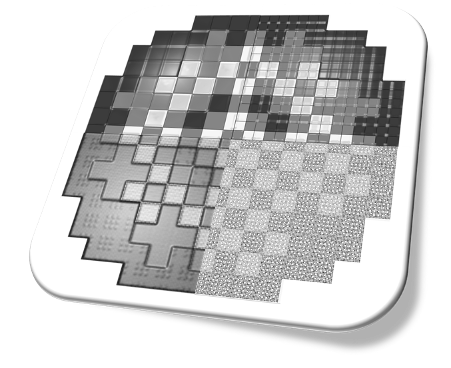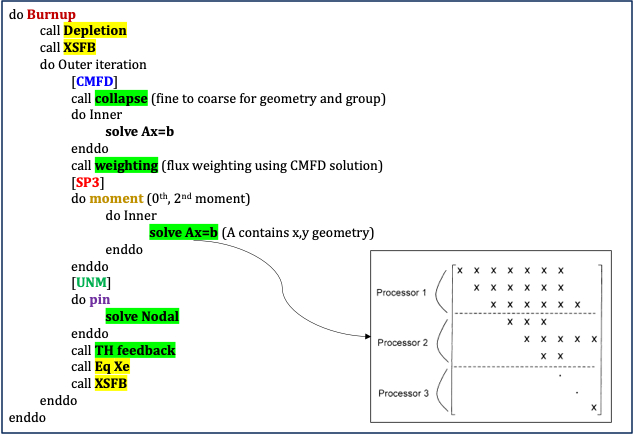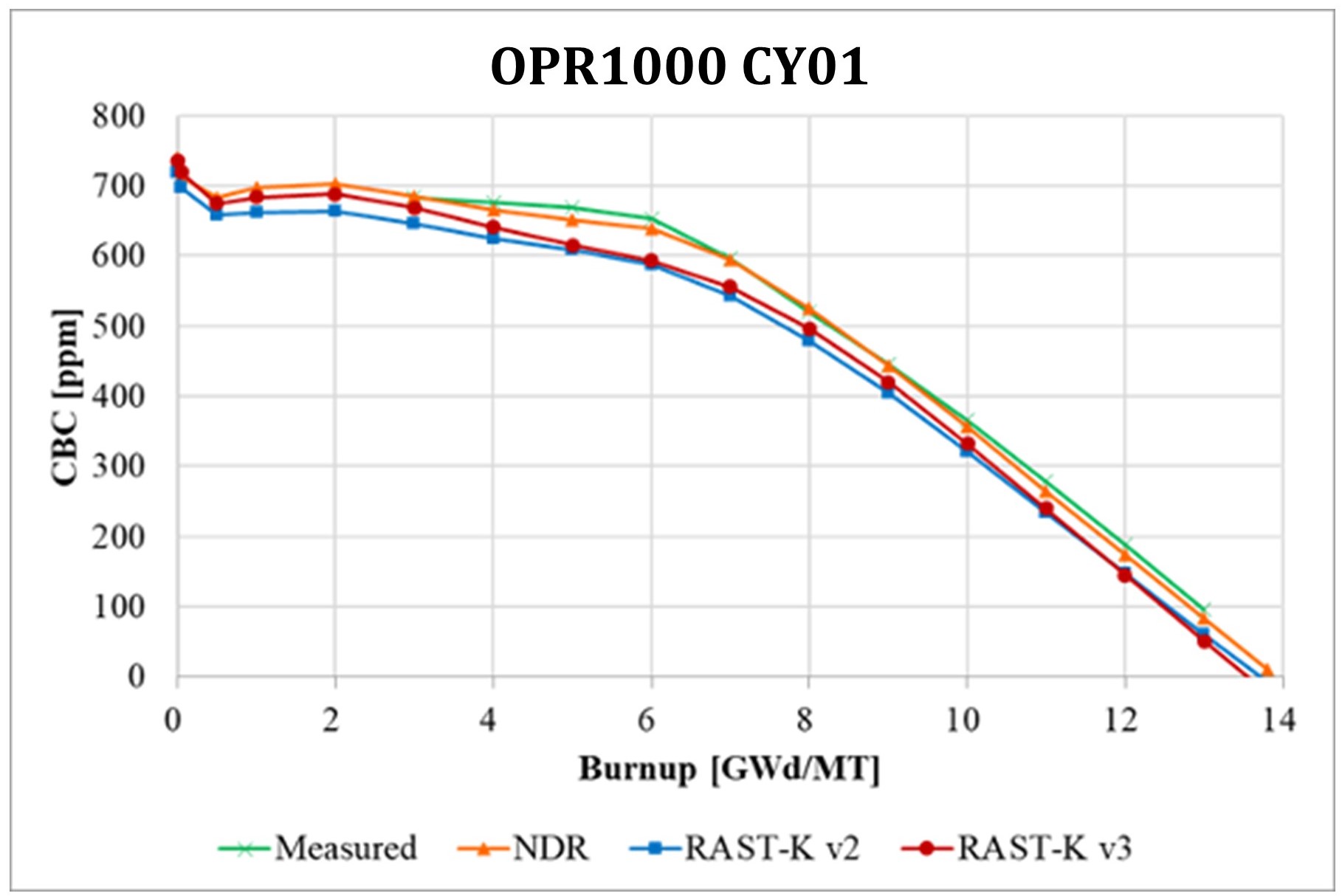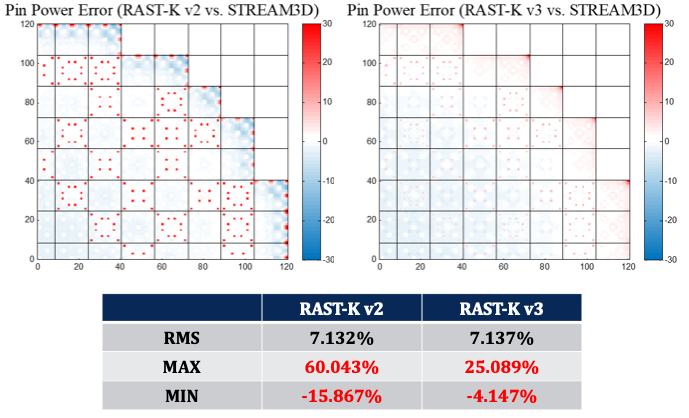Download Intro_RASKT_v3
RAST-K v3
Introduction
The nodal diffusion code RAST-K is the second part of a conventional two-step approach code system, which is developed by UNIST CORE laboratory and sponsored by Korea Hydraulic & Nuclear Power Co. Ltd.. To achieve high accuracy of reactor analysis with affordable memory requirement and computing time, the pin-by-pin kernel is newly implemented in RAST-K v3. The neutron transport calculation is performed by solving pin-by-pin SP3 equation with axially unified nodal method. The pin-wise cross section data is corrected by SPH factor to preserve the accuracy of transport calculation. The depletion, TH feedback, and cross section feedback modules and user-supporting engineering features for convenience of reactor core design and analysis are extended from the sub-assembly to sub-pin level. The parallel computing capability is also applied to pin-by-pin kernel with high computing resources.
Physics Model
Neutronics
– Multi-group pin-wise SP3
– Assembly-wise CMFD acceleration
– UNM for axial layer
XS model
– Eight-group group constants from STREAM2D
– Full / Hot case matrices
– Save micro XS for micro depletion
– XS functionalization with 3D/2D Lagrange interpolation
– XS correction using SPH factor with assembly DF
TH feedback
– Single phase formulation (no boiling) without momentum equation (constant pressure)
– 1D radial heat conduction
– Consider TCD with FRAPCON-4.0 correlation
– CTF Steam table (IAPWS industrial formulation 2008)
Fuel cycle analysis
– Micro-depletion for 22 actinides and 12 fission products
– Effective Gd approach
– CRAM depletion solver
Domain Decomposition
All processor need to have …
‒ Geometry information (all mapping index)
‒ Basic 3D information: macro XS, flux, power, psi, Tfuel, Tmod, BU, …
DD for XSFB
‒ Count node per same XS type
‒ Arrange node for each processor
‒ Then, each processor have only pin XS in 1 FA
DD for Depletion
‒ Same domain with XSFB
‒ Number density & micro XS & reaction rate
DD for TH
‒ Only radially decomposition to solve axial heat convection
DD for neutronics (SP3, UNM, not for CMFD)
‒ Same with TH, but, including mesh in reflector assembly
Verification
– OPR1000 cycle 1 whole core depletion
– Critical boron concentration
– Peaking factor
– Pin power distribution






